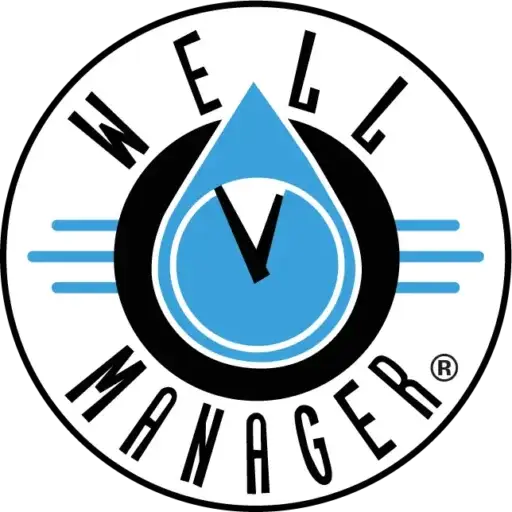When your home sits silent for a week or more, nothing seems wrong from the outside. Yet as soon as you turn on a faucet after returning from a vacation, the flow may be more of a sputter than a stream. The pressure that normally powers showers and fills washing machines can drop unexpectedly when a well system hasn’t been used. For new homeowners or anyone who travels frequently, that surprise can feel like a small crisis—something might be broken, but you’re not sure what.
That sense of uncertainty matters because water is a necessity; no one wants to start their homecoming by chasing a plumbing problem. Understanding why a well’s pressure drops after a period of disuse is the first step toward solving the issue for good. In most cases, the culprit isn’t a dried‑out aquifer but a mechanical component that has lost its charge, worn out, or clogged up. Knowing which part to check and when a quick fix is sufficient versus when to seek professional help can save time, stress, and money.
What Causes a Drop in Pressure When Your Well Sits Idle?
A well system delivers water by combining a pump, a pressure tank, and plumbing lines. When everything runs regularly, the system keeps water under pressure so the pump doesn’t need to start and stop at every turn of the tap. Letting your home sit empty changes how these parts interact. Here are some common reasons a low water pressure well may act up after a vacation.
- Lost air in the pressure tank:Modern tanks use a sealed air bladder to maintain pressure. Over time, the bladder can lose its ability to hold air or fail. Without enough air, pressure builds too quickly, causing the pump to cycle on and off in short bursts. A tank that has lost its air charge may also retain water when it should be empty, and a professional may determine that it needs replacement.
- A tired pump or mis‑set depth:Pumps work hardest when starting. If the pump is old or if it’s set high in the well, it may struggle to draw water after sitting idle. Heavy water use or drought can lower the water level, leaving the pump partly out of water until it is lowered or replaced.
- Electrical or switch issues: A blown fuse, tripped breaker, or faulty pressure switch can keep the pump from turning on. University extension experts advise that the first steps after a water loss are to check the electrical connection and the pressure switch.
- Clogged plumbing or screens:Mineral deposits can build up in pipes or in the pump’s intake screens when water sits. These clogs restrict flow and make pressure drop seem more mysterious than it is.
- Lower water level: In rare cases, extended pumping or regional drought can lower the well’s water level so much that air is drawn into the system. Signs include sputtering taps or cloudy water. Lowering the pump or adding a storage tank can help, but for most people, the problem is mechanical rather than geological.
When you know the pieces involved, the drop in pressure after a vacation becomes less of a mystery and more of a mechanical issue. Each symptom points to a different component, and a careful check can reveal whether you’re dealing with a simple air charge loss or a pump nearing the end of its life.
Quick Checks You Can Do When You Return
Coming home to a trickle doesn’t mean you need to drill a new well. Start by ruling out the simple fixes that often restore flow. These steps are safe and don’t require special tools, but always use caution around electricity.
- Turn off all water fixtures and listen.A modern pump should not run continuously. If this is the case, a check valve may be stuck or there may be a leak in the line. Continuous running without water use is a sign to call a professional.
- Inspect the breaker or fuse for the well circuit.Loss of power is an easy fix; flip the breaker or replace a fuse.
- Look at the pressure gauge on the tank.If the pressure sits at zero even with the pump running, the pressure switch may not be activating. Professionals advise against adjusting the switch yourself, but you can note the reading and relay it to a technician for further assistance.
- Check the pressure tank’s air charge.A well‑maintained tank should have a pressure two psi below the pump’s start pressure. If you have the necessary skills and the valve cap is accessible, you can use an air gauge to measure it once the tank is empty. However, some warranties require a licensed technician for this task.
- Flush a faucet.If the water sputters or looks cloudy, air may have entered the system. Run the water until it clears. If cloudiness persists, turn off the pump and seek help; sediment can damage equipment.
These checks often restore normal flow or, at the very least, identify the obvious culprits. If pressure improves temporarily but then drops again, the underlying problem is likely more significant than a tripped breaker or a clogged screen.
Why Quick Fixes Don’t Always Last
When a pressure tank is losing air or a pump is nearing the end of its life, the system may recover only to fail again. Understanding the limits of DIY fixes helps you avoid repeating the cycle.
The air in a pressure tank acts as a cushion, allowing the pump to run less often. Adding air through the valve can buy time, but it won’t repair a failing bladder. Tanks typically last about ten years; old ones can develop internal leaks that cause waterlogging and short cycling. Similarly, pumps set at the wrong depth may function properly after a reset but will struggle again when demand increases or the water level drops.
Electrical issues can also mask deeper problems. A pressure switch that keeps tripping may be reacting to rapid pressure changes caused by a failing tank; simply replacing the switch doesn’t address the underlying cause. In other cases, a clog removed from a faucet won’t address mineral buildup deeper in the system. The good news is that once you know the cause, there is a stable way to restore both pressure and reliability.
How to Increase Water Pressure and Keep it Steady
Instead of fighting symptoms each time you return from a trip, you can make your low water pressure well deliver like a municipal system. The key is to decouple household demand from well supply, then add control.
Storage, combined with a water pressure booster, solves both volume and pressure issues. By collecting water slowly into an atmospheric tank, you eliminate the need to draw directly from the well during peak demand. A booster pump then sends water into your home at a set pressure, so multiple fixtures can run without sagging. This approach mirrors the way municipal systems use towers to balance supply and demand, and it’s the heart of how to increase water pressure without overworking a small source.
A smart management system also protects the well. It monitors the level and keeps the pump running below the proven yield, preventing overpumping and allowing the aquifer to recover. Controls shut the pump off if the water level drops, protecting the motor and preventing air from entering the lines. Because the home draws from stored water, the system can be off for extended periods without affecting your shower.
Turning a low‑yield well into a reliable source doesn’t require drilling deeper or rationing water. With proper storage and a booster pump, you can take trips without worrying about returning to sputtering faucets.
When to Call in a Professional
Some issues should prompt an immediate call rather than another DIY attempt. If the pump runs constantly or not at all, if the pressure gauge fluctuates wildly, or if you hear the pump sucking air, it’s time to bring in an expert. A licensed professional can test the pump’s performance, check the valve function, measure the well’s recovery rate, and assess whether the pressure tank is nearing the end of its life.
Many homeowners are surprised to learn that a well that produces as little as a quarter gallon per minute can support a household when managed correctly. Our team at Well Manager specializes in designing systems that match low‑yield wells to modern household demands. If you return from a trip to find poor pressure, we can help determine whether a simple repair or a storage‑plus‑booster solution is right for you.
Make Your Next Homecoming Simple
When a house sits empty, your well system can lose its rhythm. Pressure tanks leak air, pumps age, and mineral deposits settle. The result is a low water pressure well that makes every homecoming feel like a problem to solve. Simple checks, such as power, pressure, and air charge, can get you through a day, but they won’t prevent the next slump. To ensure your water is ready when you walk in the door, consider a system that stores water ahead of demand and utilizes a booster pump to deliver steady pressure. It’s a long‑term answer that fits the way you live.


